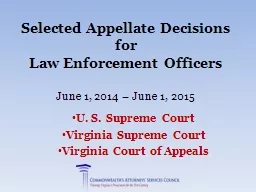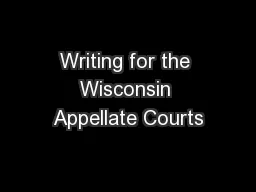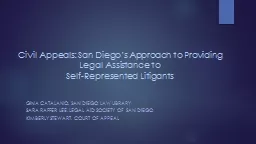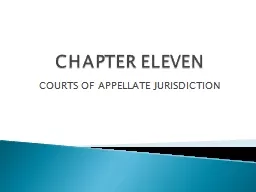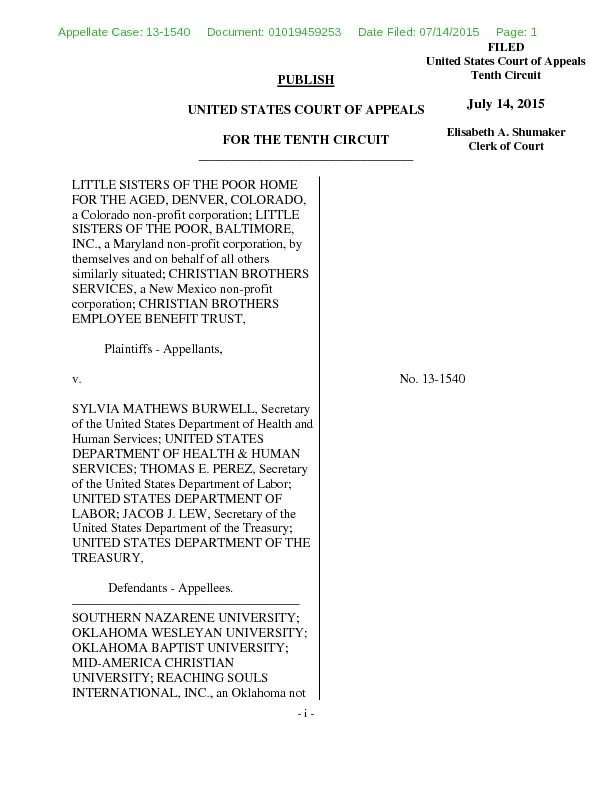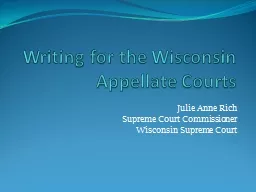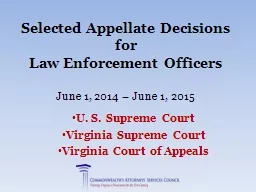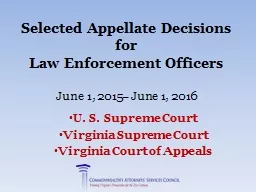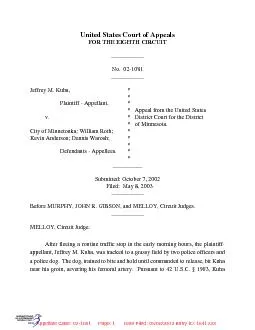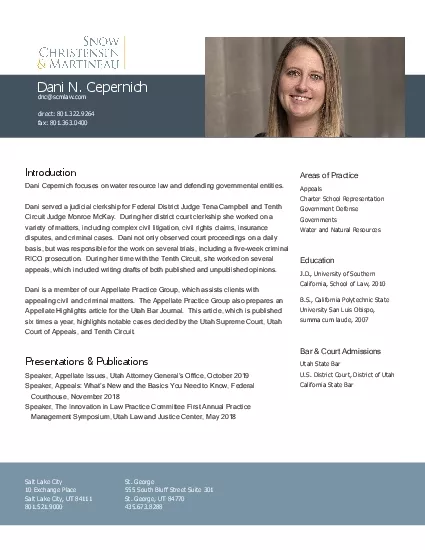PPT-Selected Appellate Decisions
Author : bobradio | Published Date : 2020-08-27
for Law Enforcement Officers June 1 2014 June 1 2015 U S Supreme Court Virginia Supreme Court Virginia Court of Appeals Please refer to 2015 Appellate Update
Presentation Embed Code
Download Presentation
Download Presentation The PPT/PDF document "Selected Appellate Decisions" is the property of its rightful owner. Permission is granted to download and print the materials on this website for personal, non-commercial use only, and to display it on your personal computer provided you do not modify the materials and that you retain all copyright notices contained in the materials. By downloading content from our website, you accept the terms of this agreement.
Selected Appellate Decisions: Transcript
Download Rules Of Document
"Selected Appellate Decisions"The content belongs to its owner. You may download and print it for personal use, without modification, and keep all copyright notices. By downloading, you agree to these terms.
Related Documents

